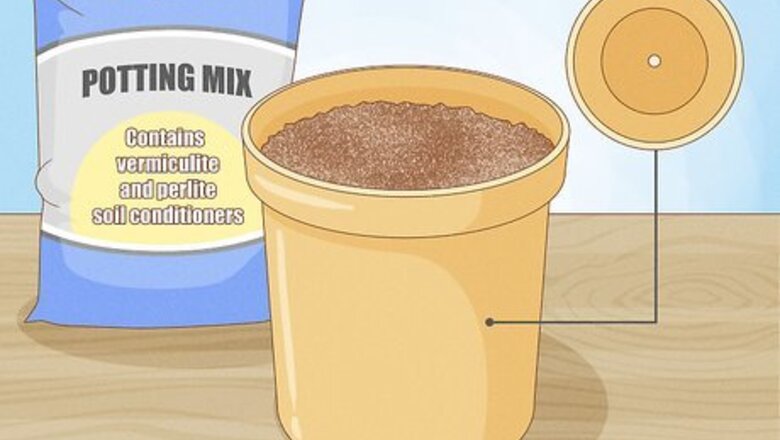
views
Creating an African Violet Trimming
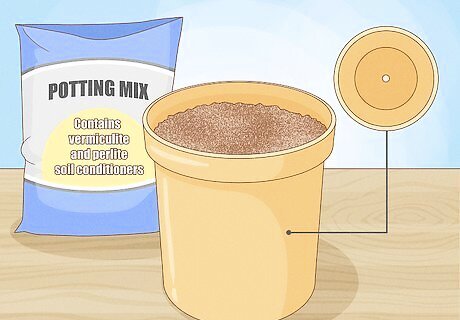
Prepare the potting medium. Purchase a commercial potting mix that contains vermiculite and perlite soil conditioners. Add this to a small plastic pot until it is 3/4 of the way full. Add just enough water to the potting mix to dampen it. Vermiculite and perlite help your soil retain moisture. Your pot should be 3–6 inches (7.6–15.2 cm) in diameter, with drainage holes in the bottom.
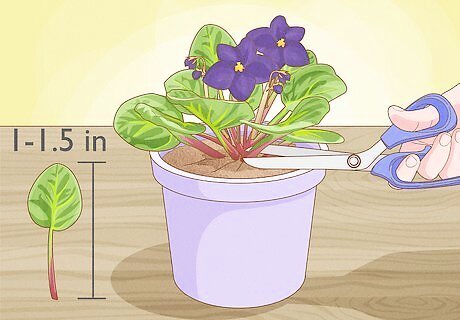
Take an African Violet cutting from a host plant. Locate a healthy, mature leaf that is growing close to the base of an existing African violet. Cut off the leaf stem with a sharp, clean knife. A healthy host plant with have a green stem without brown patches. A mature leaf should be 2–3 inches (5.1–7.6 cm) in length. Look for a healthy green leaf. The cutting needs to be 1–1.5 inches (2.5–3.8 cm). Trim it down as necessary.

Coat the stem with rooting hormone. Carefully dip the tip of your cutting into the rooting hormone. You will want to plant your cutting right away. Rooting hormone is a natural or synthetic hormone that stimulates root growth in plants. It can be purchased at most garden centers.
Planting Your Stem Leaf
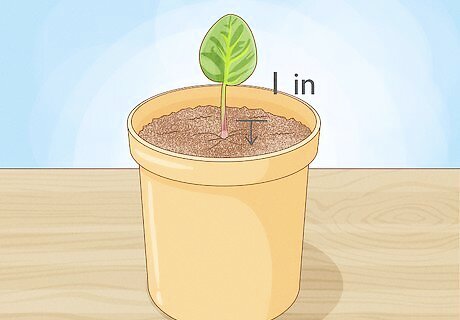
Place the cutting into the prepared soil. Make a small hole in the middle of the damp potting mix, about 1 inch (2.5 cm) deep. Plant the leaf in the hole firmly, and cover the bottom (where you applied the rooting hormone) with soil. Be sure that the top of your cutting is sticking out of the soil.
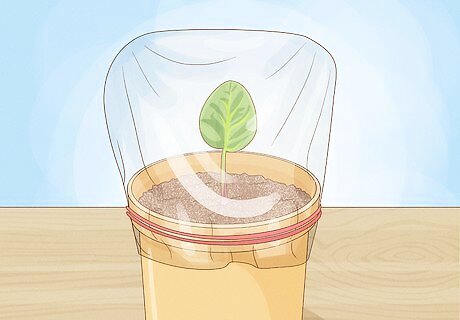
Cover the pot with a plastic grocery bag. Place the pot into a clear plastic grocery bag and tie it at the top. This bag will create a greenhouse effect, enabling your young plant to stay warm and grow. You can use a clear resealable plastic bag or a plastic lettuce container in place of a grocery bag.

Place the covered pot in an area that gets plenty of indirect sunlight. Your plant is going to need 12 or more hours of indirect sunlight each day. Find a suitable location for your plant. If you are planning to place it near a window, make sure there are no cold drafts. If you have fluorescent lights, you can use these as a light source for your plant.

Water the plant with tepid water every 3-4 days, as needed. Every 3-4 days, open your bag and place a finger in the soil. If it is dry, add 0.5 cups (120 ml) of water to the plant. If you notice that the interior of the bag has become wet with humidity, take the bag off for 2-3 hours to allow the plant to dry. Dry off the inside of the bag before placing it back on the plant. If the water from your faucet is too cold, allow to it warm up to room temperature.

Wait 2-3 months for shoots to appear. Maintain this routine with the plant inside the bag until you see small plant shoots appearing at the base of your stem leaf. Once you notice the shoots, you can remove your plant from the plastic bag.
Splitting Up Your Plants

Remove the leaf stem from the potting mixture. Carefully wiggle the original leaf stem loose from the soil, making sure not to damage the roots. As you remove the leaf stem, you should see the beginnings of small plants growing from the bottom. Wait until the leaves of the small plants are at least the size of a dime before you separate them. Hold the leaf stem at its base to reduce the risk of breaking it off.

Cut the individual plants away from the leaf stem, maintaining their roots. Wiggle the plants apart from one another, and use a knife to separate them completely. Make sure each individual plant maintains some of the roots.
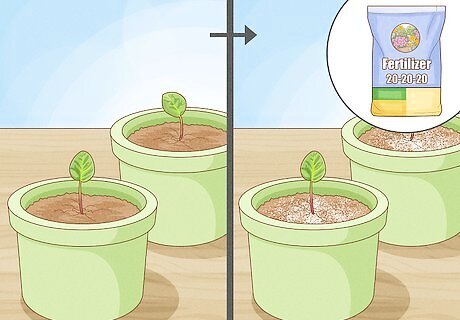
Plant each small plant in a pot with potting soil. Just as you did with your first leaf stem, plant each of these tiny plants in a pot with commercial potting soil. Water each plant until it is just moist. Since these tiny plants should already have roots, you do not need to apply rooting hormone. However, you can add a 20-20-20 fertilizer to the soil to help the plants grow faster.

Put a plastic bag back over each of the plants for 2 weeks. Use a plastic grocery bag to cover each plant and place it where it can receive copious indirect sunlight. After about 2 weeks, your plants should be ready to survive outside of their “greenhouse” bags. Make sure your plants receive 12 hours of indirect sunlight. Open the bags every 3-4 days to provide water and make sure it is not too humid inside the bag.
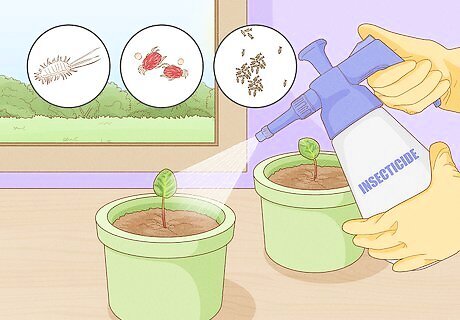
Monitor the plants for disease or pests. African violets are susceptible to fungal infections and pests like mealybugs, thrips, and mites. Examine your plants weekly and treat any diseases or pests as soon as possible so they don't spread. For fungal infections, cover the leaves of your plants with sulfur. After several days, brush the sulfur off the leaves. For mealybugs, thrips, and mites, spray your plants with an insecticide.


















Comments
0 comment